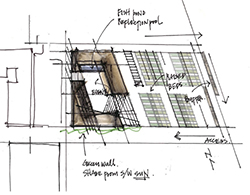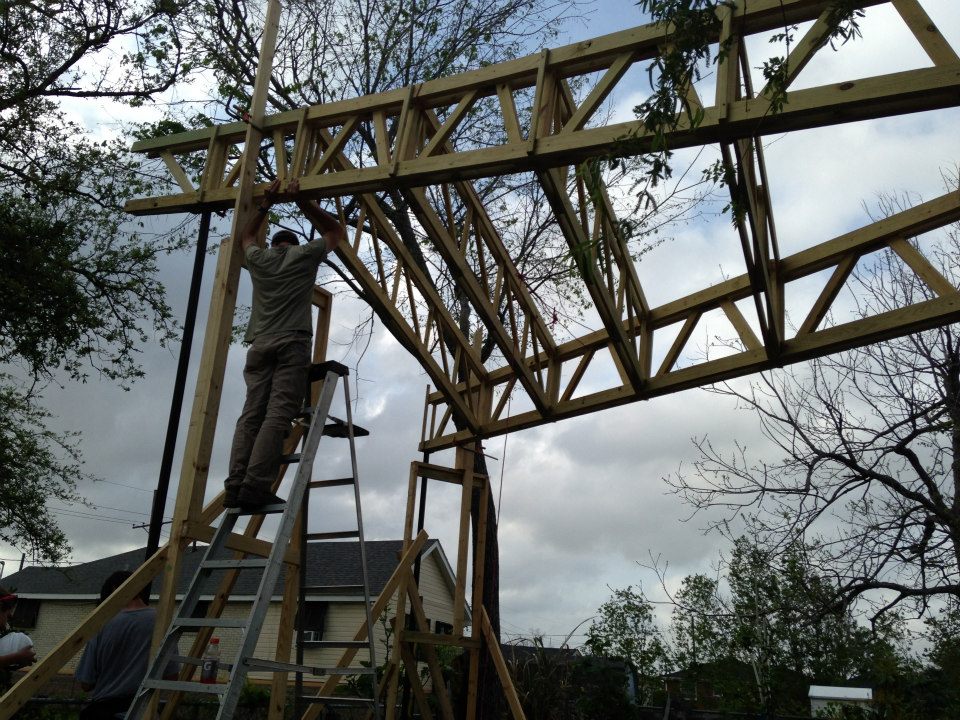To hear Sharon Litwin’s interview with Maurice Cox on WWNO radio, click here.
 Every now and then, there’s a newspaper article or television clip showing some new community project spearheaded by Tulane City Center. Chances are, few of you know exactly what the Tulane City Center is and, probably, even fewer know what it does and why it’s here.
Every now and then, there’s a newspaper article or television clip showing some new community project spearheaded by Tulane City Center. Chances are, few of you know exactly what the Tulane City Center is and, probably, even fewer know what it does and why it’s here.
“It is a part of a new national movement called Public Interest Design,” recently appointed director Maurice Cox explains about this innovative part of Tulane University’s School of Architecture. “The trend in architecture education is to embrace a much larger sector of the community in advocacy for design and quality of life through design. And Tulane, in particular New Orleans, is attracting hundreds of young designers who are specifically coming here because of the incredibly fertile moment that the city is going through in remaking itself.”
Tulane City Center was actually a pre-Katrina idea to engage members of the Tulane University School of Architecture with the wider community. Hurricane clean-up and recovery put a halt to any implementation until 2007, when faculty member Scott Bernhard became director. After five active years leading a center that involved faculty, students and community, Scott Bernhard stepped back into teaching, handing over the keys to this kingdom to urban designer Maurice Cox.

A butterfly roof for the Magellan Street Garden is among the more than 70 projects tackled by Tulane City Center.
Cox’s academic achievements as a former educator at the University of Virginia School of Architecture and, most recently, as the Director of Design for the National Endowment for the Arts are impressive. But what makes him a most unusual architecture faculty member is that he also has held political office, serving as the mayor of Charlottesville, Va., for eight years.
Cox’s background in the worlds of academic architecture and political reality, along with his personal commitment to community advocacy, should serve him well in this town where politics is a sport second only to the Saints.
“We work with non-profits that have a social mission,” Cox explains. “Since Tulane City Center is a not-for-profit arm of the School of Architecture, it allows us to create real-time opportunities to teach using the City of New Orleans as a laboratory.”
As proof of his commitment to the community, Cox has moved the Tulane City Center off the St. Charles Avenue campus and into a storefront office on Oretha Castle Haley Boulevard. in Central City. There his small core staff of three works on putting together project-based design teams of faculty and students, as well as strategic planning, community outreach and fundraising.
For more information on the more than 70 projects already completed by Tulane City Center (including Grow Dat Youth Farm, chronicled in another NolaVie story this week), go to www.tulanecitycenter.org or call 504-314-2330.
Sharon Litwin is president of Nolavie. Contact her at sharon@nolavie.com.
 Big Chem-EZ: Why is southeastern Louisiana heavily impacted by storms?
This article explores the positive and negative impacts of the engineering industry on Louisiana, including how it is impacted by storms. The author also suggests a call to action to support Louisiana coastal restoration. Big Chem-EZ discusses how finding the best course of action can be challenging, and introduces various proposed solutions to wetland loss and environmental impacts on Louisiana industries.
Big Chem-EZ: Why is southeastern Louisiana heavily impacted by storms?
This article explores the positive and negative impacts of the engineering industry on Louisiana, including how it is impacted by storms. The author also suggests a call to action to support Louisiana coastal restoration. Big Chem-EZ discusses how finding the best course of action can be challenging, and introduces various proposed solutions to wetland loss and environmental impacts on Louisiana industries.
 Waves of Change–The Impact of Political Tides on Louisiana’s Environmental Future
Healthy Gulf has been a cornerstone in safeguarding Louisiana’s natural and human resources through sustainable and equitable practices. But a new threat looms with Governor Jeff Landry’s recent consolidation proposal, which aims to merge crucial coastal management with the Department of Energy and Natural Resources. Writer Leah Claman delves into the complexities of this proposal, breaking it down for those unfamiliar with environmental policy, and sheds light on what this could mean for the future of Louisiana’s coast and its communities.
Waves of Change–The Impact of Political Tides on Louisiana’s Environmental Future
Healthy Gulf has been a cornerstone in safeguarding Louisiana’s natural and human resources through sustainable and equitable practices. But a new threat looms with Governor Jeff Landry’s recent consolidation proposal, which aims to merge crucial coastal management with the Department of Energy and Natural Resources. Writer Leah Claman delves into the complexities of this proposal, breaking it down for those unfamiliar with environmental policy, and sheds light on what this could mean for the future of Louisiana’s coast and its communities.
